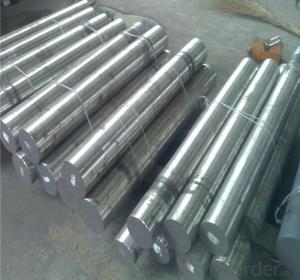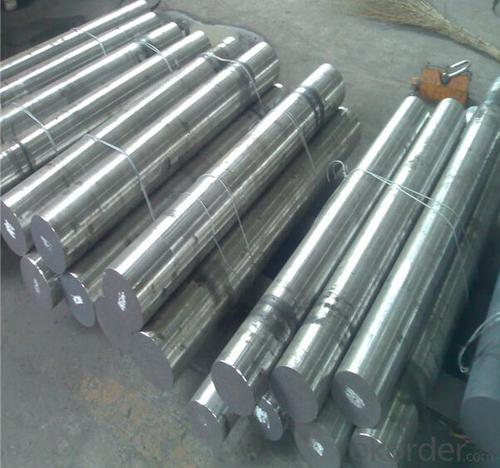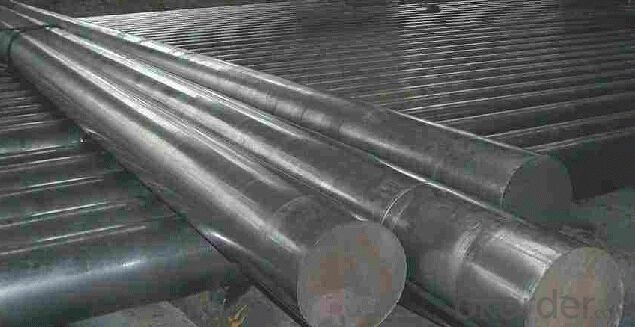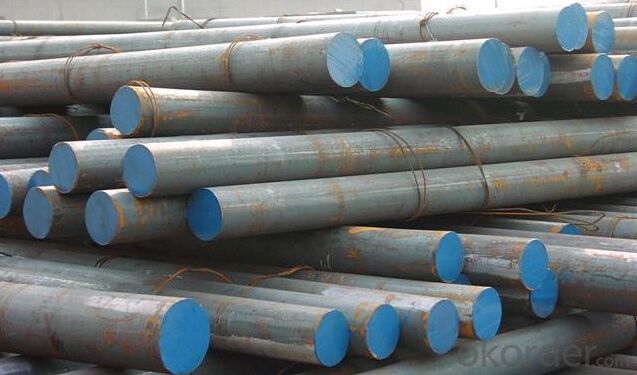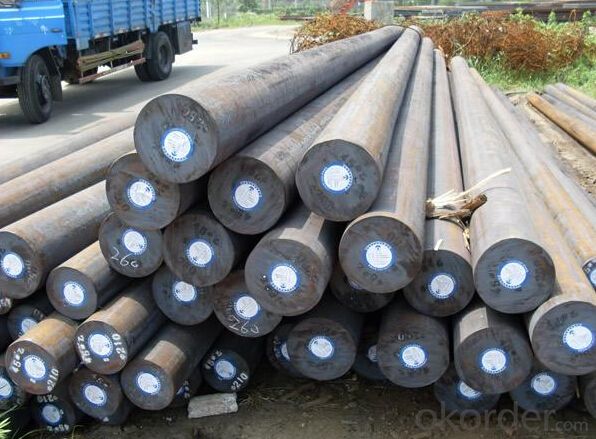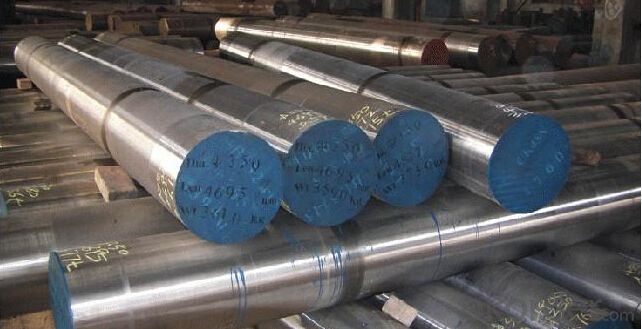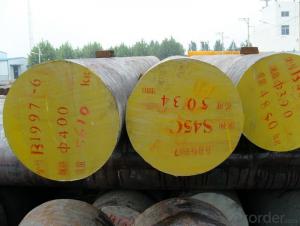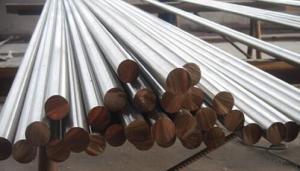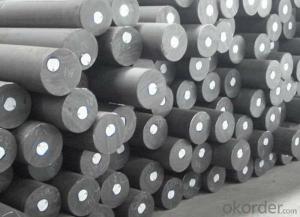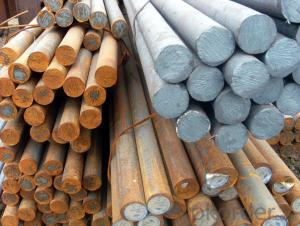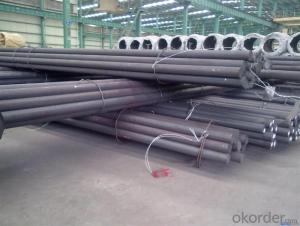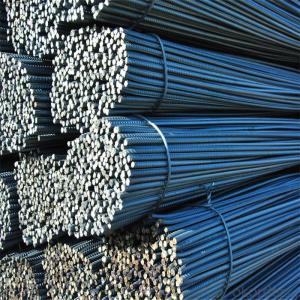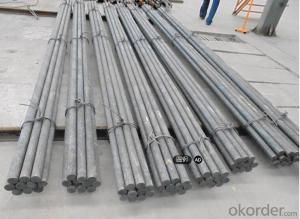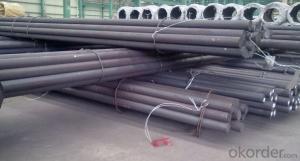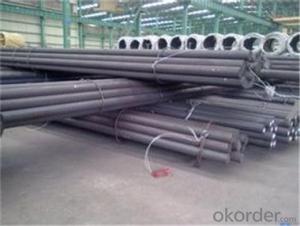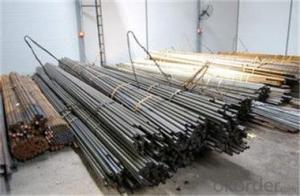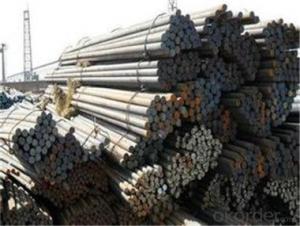Hot Sale CNBM Carbon Steel Round Bar,c45/45c8/1045
- Loading Port:
- Tianjin
- Payment Terms:
- TT OR LC
- Min Order Qty:
- 3 m.t.
- Supply Capability:
- 10000 m.t./month
OKorder Service Pledge
OKorder Financial Service
You Might Also Like
Specification
Hot Sale CNBM Carbon Steel Round Bar,C45/1045
Name | Carbon Steel Round Bar |
Shape | Round Bar/Square Bar/Flat Bar/Plate/Wire |
Standard | GB/ASTM/SAE/AISI/DIN/JIS/EN/BS |
Surface Treatment: | Black/Peeling/Polished/Machined |
Delivery Condition: | Hot Rolled or Forged/Peeled or Black Surface |
Test | SGS/UT 100% Elements Testing |
Certificate: | ISO/Mill Certificate |
Service: | 24 hours online service / |
more than 20 years trading and manufacture | |
Quality Assurance: | the third party inspection, such as SGS, BV, TUV…etc. is acceptable |
Packaging Details: | seaworthy packaging or as per customer's packing instruction |
Chemical Composition
Steel round bar specification | ||||||||
Material | C | Si | Mn | P | S | Cr | Ni | V |
45# | 0.42-0.48 | 0.17-0.37 | 0.50-0.80 | ≤0.035 | ≤0.035 | ≤0.025 | ≤0.25 | ≤0.25 |
60Mn | 0.57-0.65 | 0.17-0.37 | 0.70-1.00 | ≤0.035 | ≤0.035 | ≤0.025 | ≤0.25 | ≤0.25 |
75MnCr | 0.75-0.85 | 0.17-0.35 | 0.70-0.90 | ≤0.030 | ≤0.030 | 0.40-0.60 | ≤0.25 | ≤0.25 |
Packaging & Delivery
Packaging Detail | Sea worthy packing /as per customer's packing instruction |
Delivery Detail | 15 ~ 40 days after receiving the deposit |
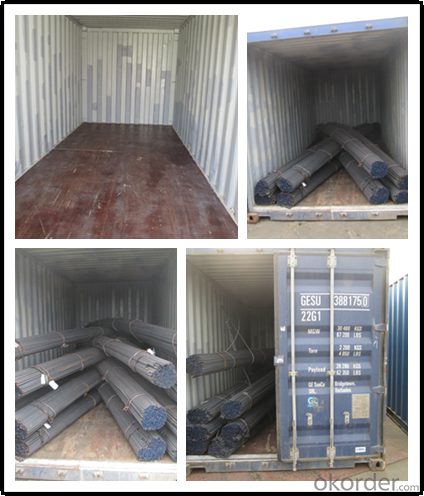
Product Show
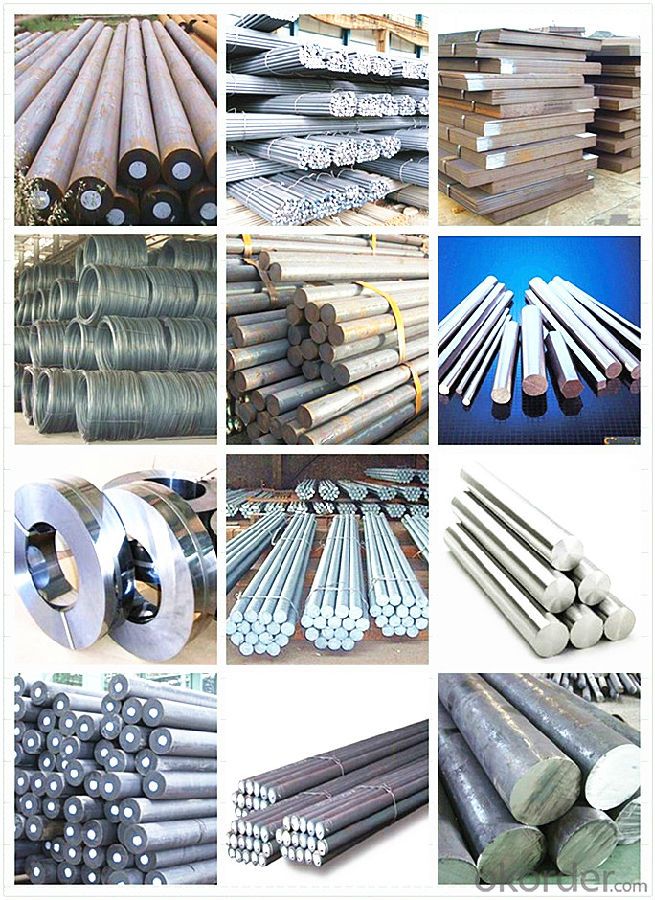
Workshop
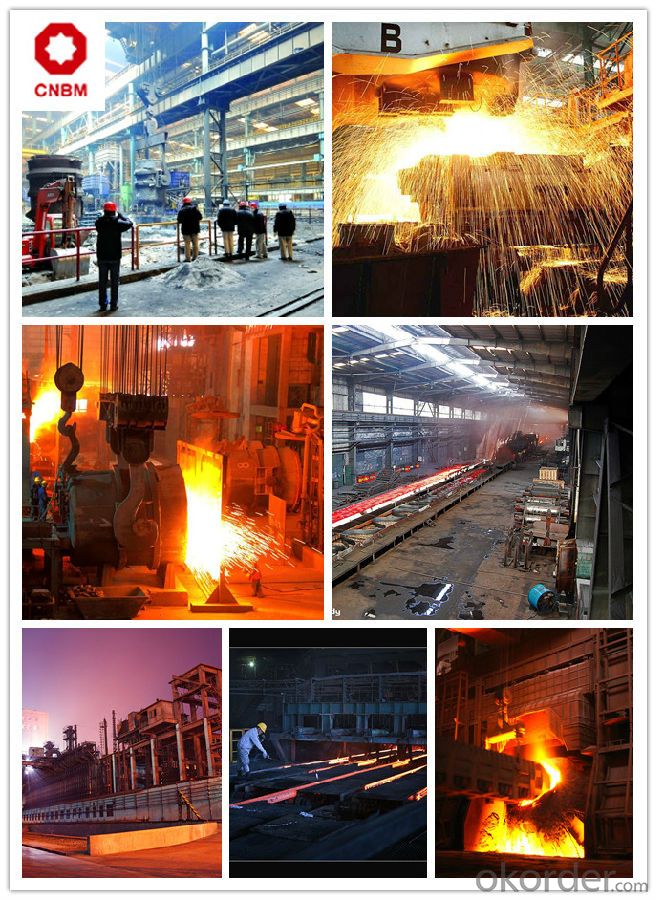
FAQ
Are you a trading company or manufacturer? | Manufacturer |
What’s the MOQ? | 3 metric ton |
What’s your delivery time? | 15-35 days after downpayment received |
Do you Accept OEM service? | Yes |
what’s your delivery terms? | FOB/CFR/CIF |
What's the Payment Terms? | 30% as deposit,70% before shipment by T/T |
Western Union acceptable for small amount. | |
L/C acceptable for large amount. | |
Scrow ,Paybal,Alipay are also ok | |
Why choose us? | Chose happens because of quality, then price, We can give you both. |
Additionally, we can also offer professional products inquiry, products knowledge train (for agents), smooth goods delivery, excellent customer solution proposals. | |
What's your available port of Shipment? | Main Port, China |
What’s your featured services? | Our service formula: good quality+ good price+ good service=customer's trust |
Where are your Market? | Covering more than 160 countries in the world |
- Q: How does special steel contribute to the automotive emission reduction?
- Special steel contributes to automotive emission reduction in several ways. Firstly, it is used in the manufacturing of lightweight components, such as the body and chassis, which helps to reduce the overall weight of the vehicle. This, in turn, improves fuel efficiency and reduces emissions. Additionally, special steel can be used to produce more durable and efficient engine parts, such as pistons and crankshafts, which enhance the overall performance of the engine and reduce emissions. Furthermore, special steel is also utilized in the production of exhaust systems, where its high temperature resistance and corrosion resistance properties help to improve the efficiency of catalytic converters, leading to lower emissions of harmful pollutants. Overall, the use of special steel in the automotive industry plays a crucial role in reducing emissions and promoting environmental sustainability.
- Q: What are the main factors affecting the wear resistance of special steel?
- There are several main factors that affect the wear resistance of special steel. Firstly, the composition of the steel plays a crucial role. The addition of certain alloying elements, such as chromium, vanadium, and tungsten, can significantly enhance the wear resistance of the steel. These elements form hard carbides or nitrides within the steel matrix, which increase its hardness and resistance to wear. Secondly, the heat treatment process used on the steel greatly influences its wear resistance. Through processes like quenching and tempering, the steel can be hardened to achieve a desired level of wear resistance. The heat treatment also helps in refining the microstructure of the steel, making it more resistant to wear and deformation. Thirdly, the microstructure of the steel is another important factor. The presence of fine grains and a homogeneous distribution of carbides or other reinforcing phases within the steel matrix greatly enhances its wear resistance. Additionally, the presence of retained austenite, a metastable phase, can also contribute to improved wear resistance. Furthermore, the hardness of the steel is a key determinant of its wear resistance. A higher hardness level generally translates to better wear resistance, as it provides resistance against the abrasive forces acting on the steel surface. Lastly, the design and surface finish of components made from special steel also affect their wear resistance. The shape, size, and surface roughness of the components can influence the distribution and magnitude of the contact stresses on the steel, thereby affecting its wear resistance. In conclusion, the wear resistance of special steel is influenced by factors such as its composition, heat treatment, microstructure, hardness, and the design and surface finish of the components. By carefully considering these factors, engineers can optimize the wear resistance of special steel for various applications.
- Q: How does special steel contribute to the aerospace industry?
- Special steel plays a crucial role in the aerospace industry by providing exceptional strength, high temperature resistance, corrosion resistance, and other mechanical properties necessary for aircraft components. It is used in the manufacturing of critical parts such as landing gear, engine components, structural frames, and fasteners, ensuring safe and reliable operation of aircraft. Additionally, special steel's lightweight nature enables improved fuel efficiency and allows for the design of more aerodynamic and efficient aircraft, ultimately contributing to the advancement and growth of the aerospace industry.
- Q: How does special steel contribute to the electronics aftermarket industry?
- Special steel plays a crucial role in the electronics aftermarket industry by offering superior properties like high strength, hardness, and corrosion resistance, making it an ideal material for manufacturing various electronic components. From connectors and terminals to springs and contacts, special steel ensures the durability and reliability of these parts, thereby enhancing the overall performance and longevity of electronic devices. Its unique properties also enable miniaturization of components, allowing for the development of smaller and more advanced electronic products.
- Q: How does special steel contribute to national security?
- Special steel contributes to national security in several ways. Firstly, it is used in the manufacturing of military equipment and weapons. Special steel possesses high strength, toughness, and resistance to corrosion, making it ideal for producing tanks, armored vehicles, submarines, and aircraft carriers. The use of special steel in military applications ensures the durability and reliability of these crucial defense systems, ultimately enhancing national security. Secondly, special steel is used in the construction of critical infrastructure. It is employed in the fabrication of bridges, tunnels, and buildings that are key to the functioning and security of a nation. Special steel's superior strength and resistance to extreme conditions make it an essential material for structures that need to withstand natural disasters, terrorist attacks, or other security threats. By utilizing special steel in infrastructure projects, a nation can bolster its security and protect its citizens. Furthermore, special steel plays a vital role in the energy sector, particularly in nuclear power plants. Special steel alloys are used in the construction of reactor vessels and other components that are subjected to high temperatures and pressures. The use of special steel ensures the integrity and safety of these critical facilities, preventing potential nuclear accidents that could pose a significant threat to national security. Lastly, special steel contributes to national security by supporting the defense industry and fostering technological advancements. The research and development of special steel alloys often lead to breakthroughs in material engineering, which can have broader applications beyond defense. These advancements can drive innovation in other sectors, such as aerospace, automotive, and energy, thereby enhancing a nation's overall technological capabilities and economic competitiveness. In conclusion, special steel's contribution to national security is multifaceted. Its use in military equipment, critical infrastructure, nuclear power plants, and technological advancements all play a crucial role in safeguarding a nation's interests, protecting its citizens, and maintaining its strategic advantage in an increasingly volatile world.
- Q: Can special steel be used for jewelry?
- Yes, special steel can be used for jewelry. Special steel, such as stainless steel or titanium, is often used in jewelry making due to its durability, resistance to tarnish and corrosion, and its hypoallergenic properties. It can be crafted into various designs and finishes, offering a stylish and affordable alternative to traditional precious metals like gold or silver.
- Q: What are the different welding methods used for special steel?
- There exists a range of welding methods that can be utilized for special steel, contingent upon the specific needs of the project. Some of the commonly employed welding methods for special steel comprise the following: 1. Gas Metal Arc Welding (GMAW): Also known as MIG welding, this technique employs a consumable electrode and a shielding gas to safeguard the weld against atmospheric contamination. GMAW is advantageous for welding special steel due to its ability to produce high-quality welds with minimal spatter. 2. Gas Tungsten Arc Welding (GTAW): Also known as TIG welding, this method employs a non-consumable tungsten electrode and a shielding gas to protect the weld. GTAW is frequently employed for special steel as it allows for precise control during the welding process, resulting in defect-free, high-quality welds. 3. Shielded Metal Arc Welding (SMAW): Also known as stick welding, this technique utilizes a consumable electrode coated in flux to shield the weld. SMAW is widely employed for special steel due to its versatility and portability, making it suitable for various positions and environments. 4. Flux-cored Arc Welding (FCAW): This method employs a tubular electrode filled with flux to safeguard the weld. FCAW is often utilized for special steel due to its ability to achieve high deposition rates and deep penetration, making it suitable for thicker materials. 5. Submerged Arc Welding (SAW): This technique employs a continuously fed wire electrode and a granular flux applied around the weld. SAW is commonly used for special steel as it can produce high-quality welds in thick sections. It is crucial to consider various factors, such as the type and thickness of the steel, the desired weld quality, and the specific application requirements, when selecting the appropriate welding method for special steel. Therefore, it is advisable to consult with welding professionals or engineers to determine the most suitable method for a particular project involving special steel.
- Q: What are the factors affecting the machinability of special steel?
- There are several factors that can affect the machinability of special steel. 1. Alloying elements: The composition of special steel plays a significant role in its machinability. Some alloying elements, such as sulfur and lead, can improve machinability by creating free-cutting properties. On the other hand, elements like chromium and nickel can make the steel harder to machine. 2. Hardness: The hardness of special steel can impact its machinability. As the hardness increases, the steel becomes more difficult to machine. Harder steel requires higher cutting forces, which can result in increased tool wear and slower machining speeds. 3. Microstructure: The microstructure of special steel, including grain size and distribution, can affect its machinability. Fine-grained steels generally have better machinability compared to coarse-grained ones. Additionally, the presence of certain phases, such as carbides, can make machining more challenging. 4. Heat treatment: The heat treatment process used on special steel can influence its machinability. Some heat treatments, like annealing or stress relieving, can improve machinability by reducing hardness and internal stresses. Conversely, hardening treatments can increase hardness and make the steel more difficult to machine. 5. Cutting conditions: The choice of cutting parameters, such as cutting speed, feed rate, and depth of cut, can impact machinability. Optimal cutting conditions need to be selected to balance productivity and tool life. Inadequate cutting conditions can lead to excessive tool wear, poor surface finish, and reduced machining efficiency. 6. Tool material and geometry: The selection of cutting tools is crucial to the machinability of special steel. The tool material must have appropriate hardness, toughness, and wear resistance to withstand the cutting forces generated during machining. The tool geometry, including rake angle and relief angle, also affects chip formation and heat dissipation, which can influence machinability. 7. Lubrication and cooling: The use of proper lubrication and cooling methods is essential for good machinability. Lubricants help reduce friction and heat generation during machining, while cooling methods, such as flood cooling or misting, can dissipate heat and prolong tool life. Insufficient lubrication or cooling can result in increased tool wear, surface finish issues, and reduced machinability. Overall, the machinability of special steel is influenced by a combination of factors related to its composition, microstructure, heat treatment, cutting conditions, tooling, and cooling methods. Understanding and optimizing these factors can lead to improved machinability and productivity in machining special steels.
- Q: How does special steel resist wear and tear?
- Special steel resists wear and tear due to its unique composition and manufacturing process. It is made with a higher percentage of alloying elements such as chromium, nickel, and molybdenum, which enhance its hardness, strength, and corrosion resistance. This increased hardness enables the steel to withstand abrasion, friction, and impact, making it highly durable and resistant to wear and tear. Additionally, special steel undergoes specialized heat treatments and mechanical processes that further enhance its toughness and resistance to deformation, contributing to its ability to withstand harsh and demanding conditions without significant deterioration.
- Q: What are the main applications of special steel in the textile industry?
- Special steel is used in the textile industry primarily for manufacturing textile machinery components. It is utilized to produce high-quality parts and tools like knitting needles, loom parts, and various cutting and shaping equipment. The strength, durability, and resistance to wear and tear of special steel make it an ideal material for these applications, ensuring the efficient and reliable operation of textile machinery in the industry.
Send your message to us
Hot Sale CNBM Carbon Steel Round Bar,c45/45c8/1045
- Loading Port:
- Tianjin
- Payment Terms:
- TT OR LC
- Min Order Qty:
- 3 m.t.
- Supply Capability:
- 10000 m.t./month
OKorder Service Pledge
OKorder Financial Service
Similar products
Hot products
Hot Searches
Related keywords
